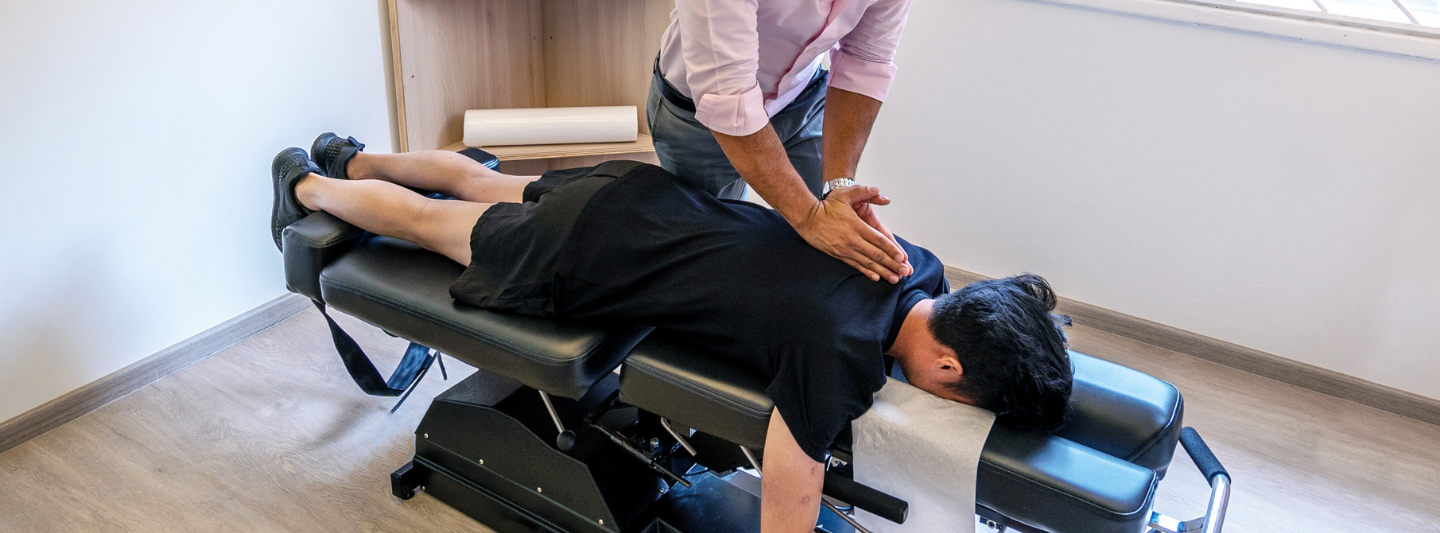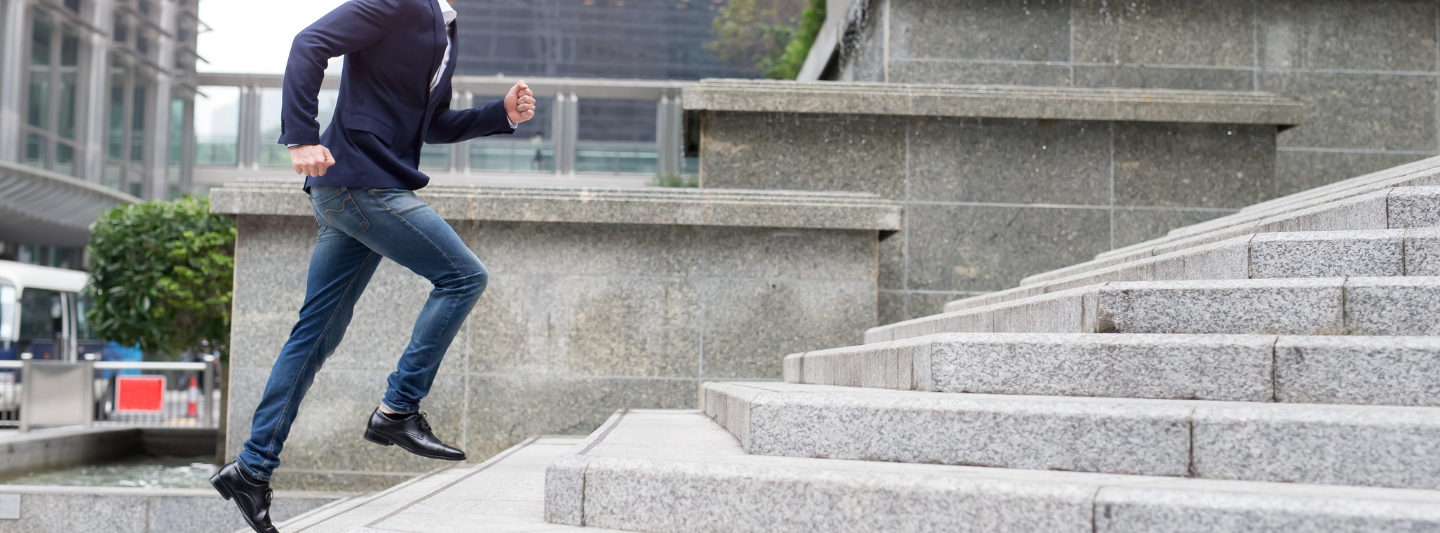The biggest difference between a sedentary lifestyle and an active lifestyle is primarily the awareness of this fact - your body was created to move! Our entire neuromusculoskeletal frame was built and designed for movement. If we are not moving the right ways and right amounts, then we are basically living our lives against the template from which our bodies are programmed.
Chiropractic Physician, Dr Benjamin Tan, strongly believes that the human body was created to move. Learn about the importance of and common misconceptions on movement, as he shares his thoughts and experiences:
The lack of movement
Our lifestyles today have shrunk into a daily repertoire of uni-dimensional movements. It is only right that we give credit to the “fitness movement” that is evidently growing in Singapore. However, a lot of those movements happen within a fitness or exercise class setting, and they happen either before or after work.
Many forget that the duration of inactivity is often the main culprit for the onset or worsening of some of the common pain syndromes like headaches, neck pain, shoulder pain and low back pain, just to name a few. I am sure throngs of people here in Singapore would agree that prolonged sitting is a norm. Don’t blame it on WFH resultant of this global pandemic. Sitting for too long has always been a bane of our society.
Admittedly, it seems inevitable given the nature of our intense work environment that most of us find ourselves trapped in. However, there are some easily implementable steps that one can take to ensure movement throughout the day.
Why is movement important
A lot of us have the inherent tendency to wait till something bigger than a few days old nagging pain creates an impetus for us to take action. Even when some of us actually decide to take action, the options for treatment to consider are not so clear.
We know in the scientific literature that the role of exercise is important for neuromuscular learning and broadly important for “overall health”. While that is all true, the issue with our current education about exercise is ‘when to do them’, or for care providers, a more fitting question would be ‘when to prescribe them?’.
This then begs the question: “What about when I am not exercising? What can I still do to maintain movement?”
The answer lies with this principle of training with intention and purpose.
This is especially true for those with injuries and pain, even if they were first sustained years ago. Fact check: your body actually remembers pain and alters your body’s motor patterns based on the faulty joints and muscles. It’s known as “chronic pain”.
For those with any condition of any severity, my professional viewpoint is to always get it diagnosed by a professional first. Once you have a diagnosis from a diagnostician (including Chiropractic physicians, orthopaedists and some others), treatment and proper re-learning can be tailored to your specific needs.
Myths surrounding a lack of movement
I always get asked questions about recommendations for Ergonomic equipment. There is just too much sadly confusing information out there about the “best” ergonomic equipment. Did you know that as vitally important as "posture" is to one's body, there really are no good-quality studies evaluating the effectiveness of ergonomics?
"People have to be reassured that the main difference between those who have any symptoms, regardless of severity, and those in whom is completely asymptomatic, has everything to do with their body's ability to adapt to the changes, and this ability can be trained." - Craig Liebenson, DC, editor of 'Rehabilitation of the Spine', a well-known practitioner's manual for diagnoses and management of spinal disorders.
The way to train this amazing innate ability to adapt to change is through purposeful and intentional movements, as said above.
How can we include more movement daily
-
Walk around as you ponder about work-related stuff every 20-30 minutes. It takes as short as 20 minutes for your spine to undergo some lasting changes to the ligaments and tendons, which creates an overly flexible spine. This in turn causes instability, which creates tightness and stiffness in spinal muscles that are key to your posture. Stiff shoulders that need a massage every so often? This is a good explanation for it.
-
Purposeful and intentional movements. Here is the key, the less complex the better. Incorporate movement patterns into your exercise regime that involves a “walking pattern”. After all, we are the only truly bipedal mammals in the world. The human bodies are primed to walk. Yes, walking is one of the most functional, purposeful and intentional movements of daily living that is highly neglected. Did you know that scientific evidence has proven that maladaptive walking is an undeniable feature of patients with spinal pain? So if you have some form of spinal pain that has been properly diagnosed, walking as part of your rehabilitation is highly recommended.
In a nutshell, you were created to move. If you have had some form of pain currently or in the past, there is a high chance that you’re not walking the right way that your brain innately knows how to. You can easily do something about it by first getting it diagnosed by a diagnostician.
Something for you to think about and I hope that this article has inspired you to move better today.
Get properly diagnosed with Dr Benjamin Tan, a Chiropractic Physician who specialises in non-pharmacological and non-surgical orthopaedic medicine.
You will probably, like a lot of his patients, get a detailed letter about your condition, so that your other care providers like a physiotherapist or massage therapist, just to name a few, would be more aware of how to “rehab” you properly.
Featured Contributor:

Dr Benjamin Tan is a native to Singapore who prides himself as being a Chiropractic Physician who specialises in the non-pharmacological and non-surgical approach to Neuromusculoskeletal Medicine. Specifically, Dr Ben uses an evidenced-based neuromusculoskeletal medicine approach as well as physiology and neurological hierarchy-based ‘Applied Kinesiology’ to treat every patient.
Dr Ben is a firm believer that everyone on this earth has been created with intention and purpose. The intricacies and complexities of the human body are only deserving the utmost respect and honour from medical or healthcare professionals.
Being a huge proponent of collaboration amongst medical professionals, Dr Ben strongly strives to seek and understand the huge variances in perspectives, opinions and doctrines across all professionals. Dr Ben envisions a referral network amongst all of healthcare, through which all medical professionals can seek each other’s help, ultimately to provide all of humanity the most optimal care for their health.
For every patient that walks through his doors, Dr Ben will strive to honour, by equipping one with quality Chiropractic so that one and one's future generations will prosper.


